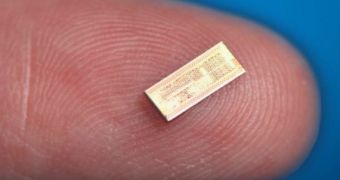After months, even years of failed attempts to secure a share of the mobile market, Ivy Bridge-delaying Intel is finally making the first real steps towards giving ARM a difficult time.
There are several companies announcing Intel smartphones, one of which is Orange, a major player in the UK and France.
Its over two hundred million customers will soon (this March, probably) get the option of buying smartphones based on the Intel Z2460 SoC.
US hopefuls will only get such phones a month or two later, depending on when their favorite carriers try out the SoC (system-on-chip).
This chip was supposed to work at a frequency of 1.6 GHz, but the people at ExtremeTech say the upper clock limit is now 2 GHz, 25% more than before.
Each implementation, that is to say phone, will be different, though, so only the “heavyweight” Medfield smartphones will actually use that potential fully, from what we can gather.
That said, the Z2460 will not be a lone wanderer for long: some time during the second half of the year (2012), the Atom Z2000 will appear.
As a low-power Atom variant, the Z2000 will have a clock speed of just 1 GHz. No clue whether it is a new chip altogether or just a tweak of Z2460.
Back to Orange, its first phone will have a 4-inch screen, 16 GB of flash storage and a weight of 117g (about 4 oz).
Its only drawback will be the lack of Android 4.0 Ice Cream Sandwich. Though ICS will be delivered through an OTA update at some point, the phone will be loaded with Gingerbread at launch (Android 2.3).
As a side note, when the Atom Z2000 comes out, Intel will launch a new HSPA+ capable modem as well. That means that, as the Z2460 is paired with the XMM 6260, so will its sibling use the XMM6265.
As some may have discerned, Intel is starting slow, approaching the emerging markets first. The first high-end smartphone chip won't debut until 2013: Atom Z2580, based on the 32nm node.
It will be a dual-core Medfield working at 1.8 GHz, with Hyper-Threading and a dual-core GPU (DirectX 9-ready SGX544 at 533 MHz). Its modem will be the LTE-capable XMM 7160. For the sake of comparison, the current, single-core Medfield GPU runs at 400 MHz.
All in all, Intel has the performance side of things well in hand, even if it does seem to be pushing clocks high in order to compete with potentially more advanced chip designs. As such, only power efficiency will determine the fate of Medfield, an area that chipzilla has repeatedly claimed (and proven, to an extent) to be making great progress in.

 14 DAY TRIAL //
14 DAY TRIAL //